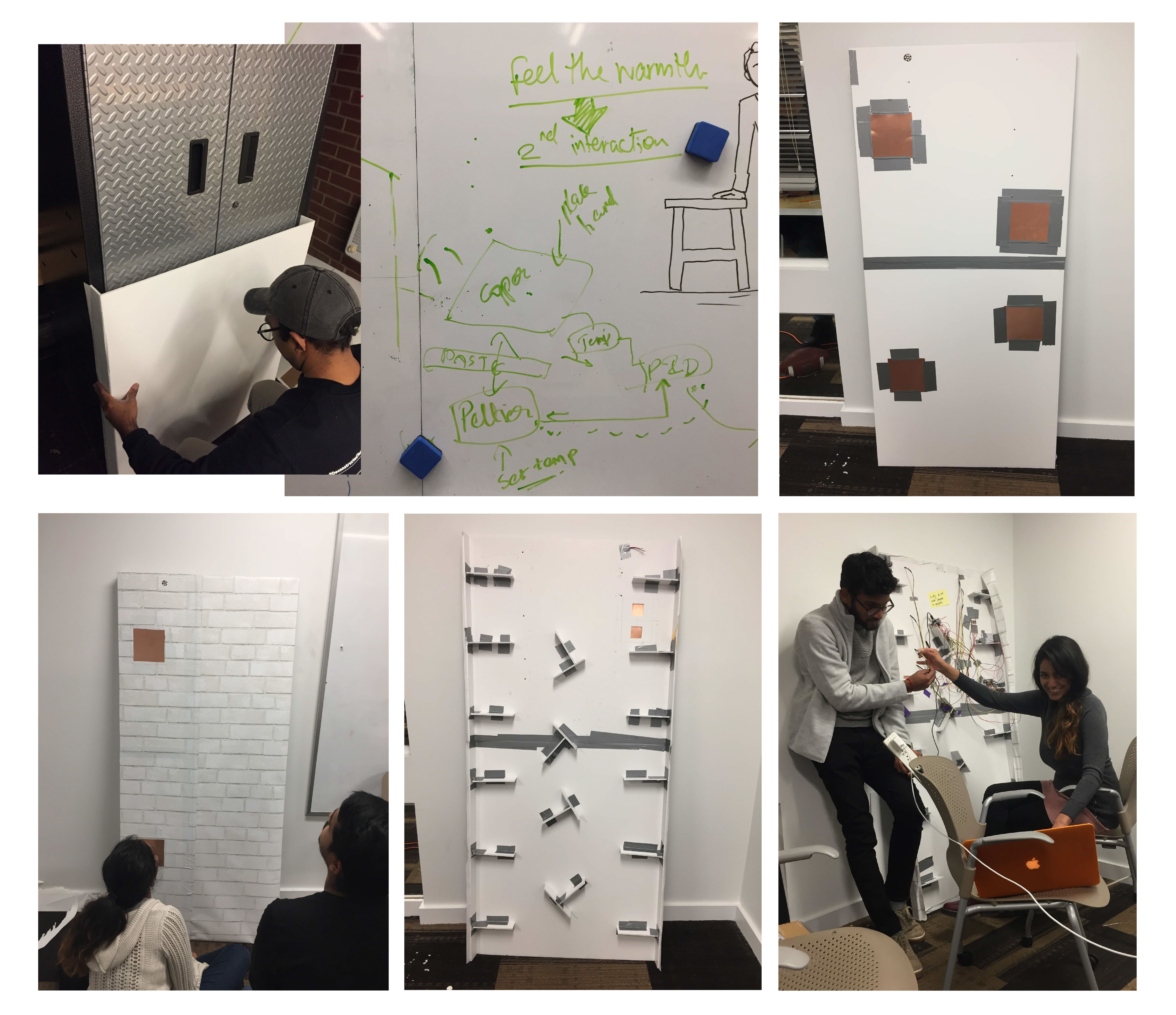Process
We first started with the goal of creating a shared connection between people in physically different places. The ideas generated among the team ranged from using a love lock on a bridge to sense another's presence elsewhere, to holding a poll that was warm from someone else's touch.
Ultimately, the team was most intrigued by the idea of receiving and giving warmth as a way to build connections between two people. Warmth is not just a emotional state but also a physical, tactile experience. We decided we could realize the experience using thermoelectric cooler peltier, capacitive touch sensor, and copper plates. And the internet would enable us to facilitate the act of storing and sharing of warmth between people near and far.
Knowing that the interaction is physically feasible, we then moved on to the next question for how to package the sensors for people interacting with our installation. Since our goal is to bridge connection between people, we started thinking about what physical objects represent barriers today. Objects such as doors, walls, and locks came to mind. We eventually decided on creating a wall for our sensors, since it is by function a divider of spaces, and is used historically and politically to deliberately create barriers between people.
In making the deliberate design choice to build a wall, but use it as a means to connect people, we hope to inspire inclusion rather than isolation.
Conceptually, a challenge we encountered was defining the community for our installation. We wanted to be as inclusive as possible, but also not just leave it at "it is an experience for all". Even though the experience was for all and lives in a public space, the feeling of warmth should be personal. We decided in the end, we will define the community simply by the experience they share.
From the technical side, we encountered challenges with the touch sensors that were to be installed behind the wall. Initially, we chose to use a capacitive sensor for a more reliable outcome. However, in practice we found ourselves averaging a lot of readings using the code. In the end, we simplified our approach by using FSR sensors and mocking them behind copper plates with a push mechanism. This solution did result in the expected interaction. That said, moving forward we would like to ensure accurate readings every time without asking people to consistently apply a lot of pressure onto a particular section of the plate. Another challenge we encountered was that our peltiers had worked effectively without the plate. The added plate deduced the effect of the warmth. Therefore, moving forward we would also like to somehow intensify that effect as it is the main factor of our piece.

